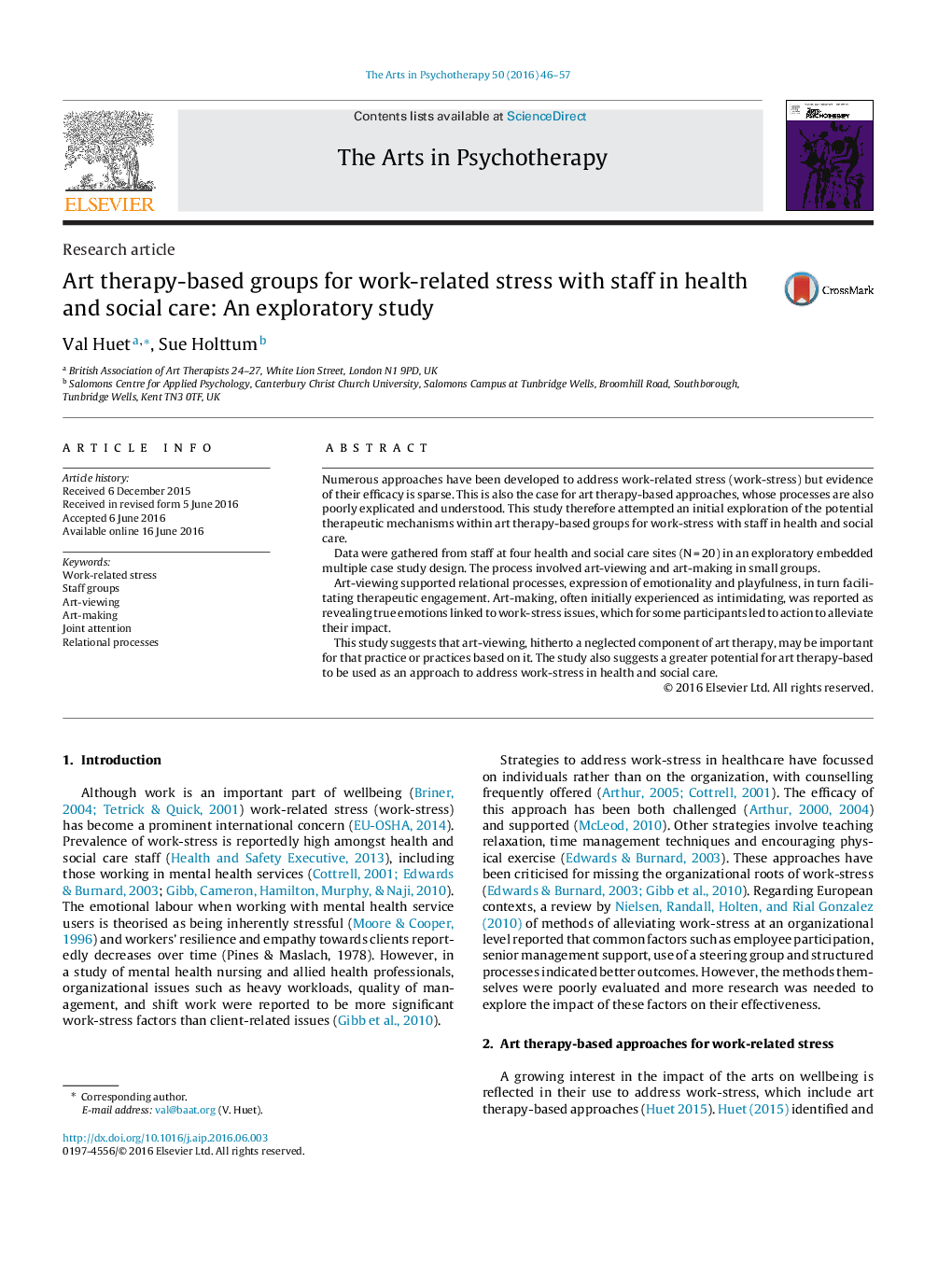| Article ID | Journal | Published Year | Pages | File Type |
|---|---|---|---|---|
| 343528 | The Arts in Psychotherapy | 2016 | 12 Pages |
•Thirteen out of twenty participants reported some beneficial impact attributed at least partly to the process.•Nine participants who became engaged in art as a result of the process were still involved six months to a year after the end of the groups.•Art-viewing supported relational processes, expression of emotionality and playfulness.•Art-making, often initially experienced as intimidating, was reported as revealing true emotions linked to work-stress issues.
Numerous approaches have been developed to address work-related stress (work-stress) but evidence of their efficacy is sparse. This is also the case for art therapy-based approaches, whose processes are also poorly explicated and understood. This study therefore attempted an initial exploration of the potential therapeutic mechanisms within art therapy-based groups for work-stress with staff in health and social care.Data were gathered from staff at four health and social care sites (N = 20) in an exploratory embedded multiple case study design. The process involved art-viewing and art-making in small groups.Art-viewing supported relational processes, expression of emotionality and playfulness, in turn facilitating therapeutic engagement. Art-making, often initially experienced as intimidating, was reported as revealing true emotions linked to work-stress issues, which for some participants led to action to alleviate their impact.This study suggests that art-viewing, hitherto a neglected component of art therapy, may be important for that practice or practices based on it. The study also suggests a greater potential for art therapy-based to be used as an approach to address work-stress in health and social care.
